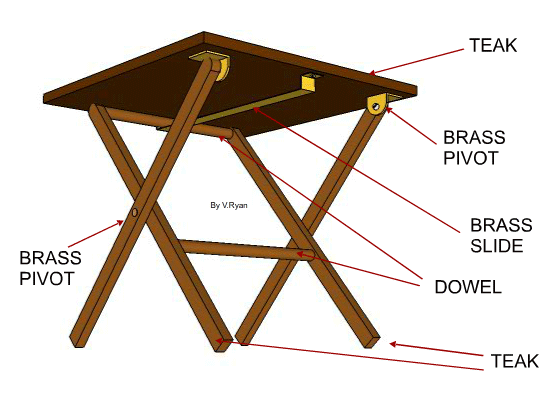|
Product analysis involves looking closely at existing products and identifying how they work, the materials they are made from, the industrial processes used to manufacture them and their key features. It may also involve the designer asking the general public or potential customers what they think of the product. The aim of product analysis is to help the designer develop even better designs and products in the future. |
||
| A typical folding picnic table is seen below. Study it carefully and then read through the product analysis below. | ||
 |
||
|
WHAT PRODUCT ANALYSIS TELLS US ABOUT THE PICNIC TABLE? |
||
| 1. The product is made from material able to
withstand the climate outside - teak similar material. 2. It is relatively light and tough, able to withstand being dropped and accidentally knocked. It is impact resistant. 3. It can be folded with ease although watch hands and fingers when doing so.. 4. It is a natural wood, pleasant to the eye. 5. The table is stable and unlikely to be knocked over unless knocked with great force.. 6. The table top can hold quite an amount of food and drink. 7. It is safe as there are no extremely sharp edges, they are all slightly rounded to protect hands and fingers. 8. It can be manufactured through traditional woodworking techniques or batch production techniques in a factory. 9. It can be delivered to the customer as knock down furniture (assembled by the customer using basic tools). 10. It will fit in with most wood based outdoor furniture, especially teak furniture. 11. The mechanism is simple and unlikely to stick or break 12. It is relatively cheap to manufacture. |
||
| WHAT PRODUCT ANALYSIS TELLS US - POSSIBLE IMPROVEMENTS | ||
| 1. Recycled wood could be used to manufacture
the table. This could be a good selling point to potential customers. A
version made entirely from recycled material may prove popular. 2. A range of similar designs could be produced for chairs and stools. The same folding mechanism could be modified so that additional furniture could be folded for ease of transportation. 3. The same product could be manufactured from plastics such as perspex or high density polystyrene. Metals such as aluminium and steel could be used. This would give the customer more choice. 4. It could be manufactured through injection moulding (plastics) with only three main parts (top, and two sets of legs). There would be no need for assembly of several parts. This would make it much cheaper to produce. Less material would be wasted. 5. A range of sizes could be manufactured. For example a longer table or a childrens table. |
||
| CLICK HERE FOR RESISTANT MATERIALS INDEX PAGE | ||